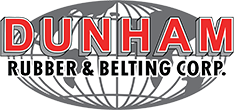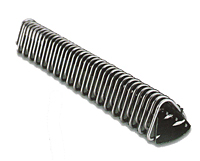How to specify the right Clipper fastener- Measure belt thickness.
Use the Clipper hook gauge, micrometer or caliper to measure belt thickness. If the belt has an impression cover, skive cover 1" back from belt end prior to measuring. Do not cut belt carcass.
Measure pulley diameter.The minimum pulley diameter is the smallest pulley that has a belt wrap of at least 90 degrees.
Determine hook choicesReferring to Hook Selection Chart in additional info tab at right, locate belt thickness on top of the chart and minimum pulley diameter on the left side. using the matrix, determine the hook sizes most appropriate for your application. Do not select hooks that specify a larger minimum pulley, the leg length will be too long, causing leg fatigue and premature failure.
Select hook wire diameterHooks are produced in various wire diameters. A splice made from a smaller wire diameter is quieter and wears less as it contacts conveyor components. A splice made from a larger wire diameter offers greater strength and abrasion resistance.
Select style.Choose between unibar and carded fasteners based on your application requirements. All Unibar offerings begin with "U" (UCM, UX1, U2, etc.)
Select hook leg length (reachback).Reachback refers to how far back the hook legs reach in the belt. Under normal conditions, select a fastener with the shortest leg length to avoid unnecessary fatigue. Longer leg lengths should be used if you are experiencing "comb out". This occurs when hooks are pulling out transverse fill yarns in the belt while the hook remains fully clinched.
Select materialRefer to our Fastener Material Characteristics page for metal which best suit your application. Not all sizes and styles are available in all metals.

